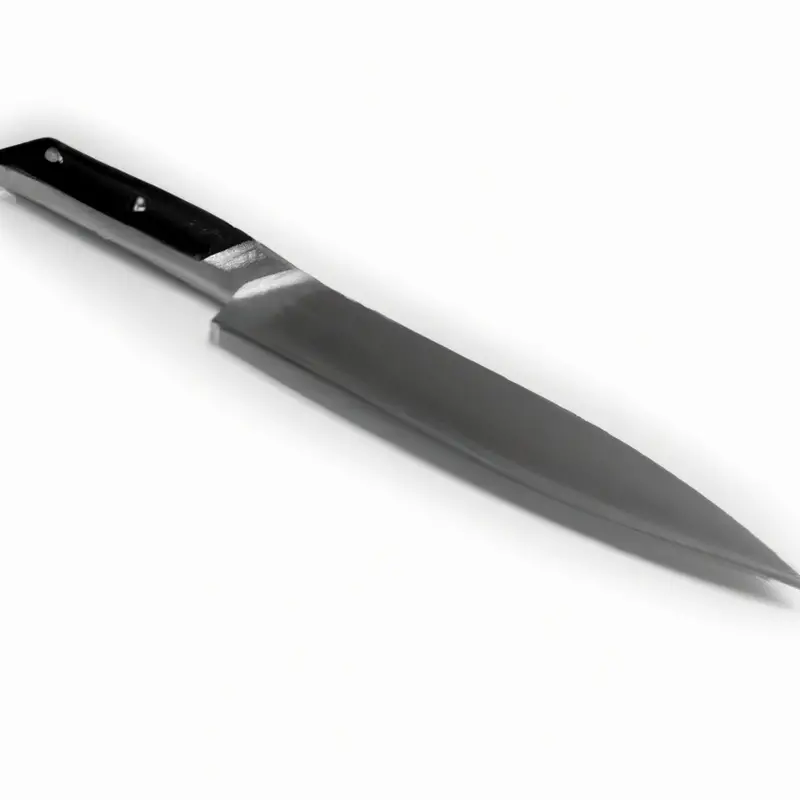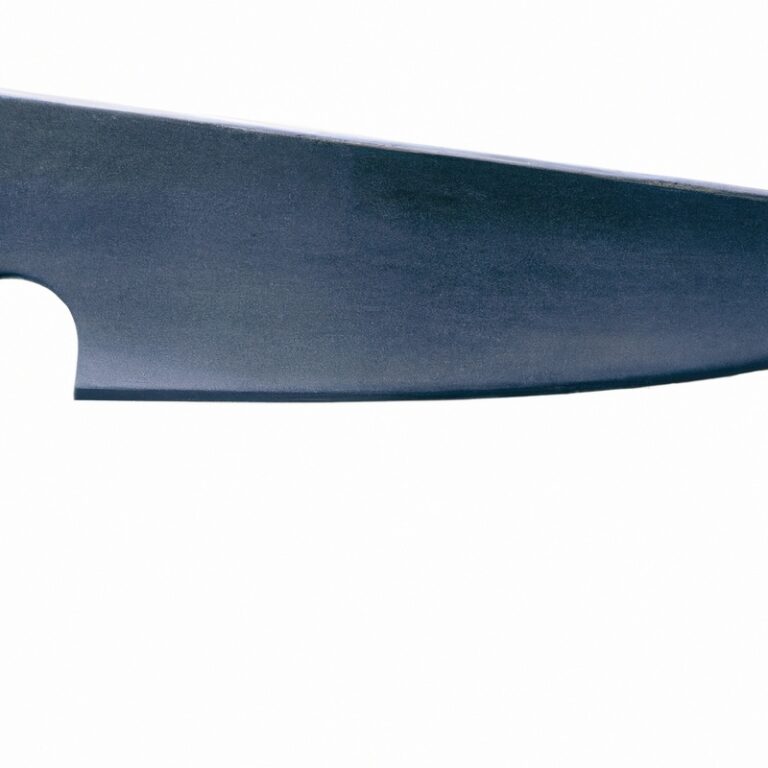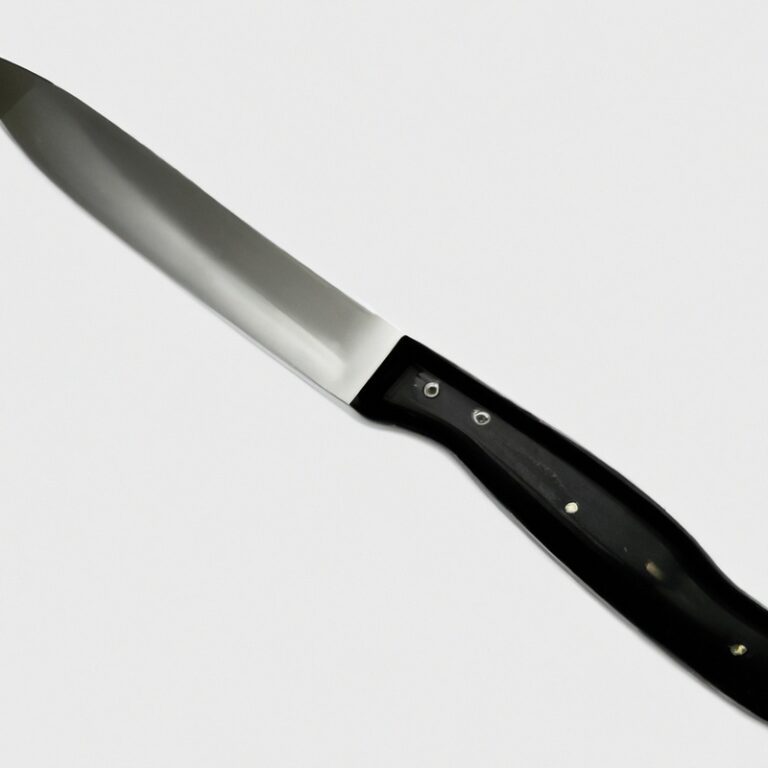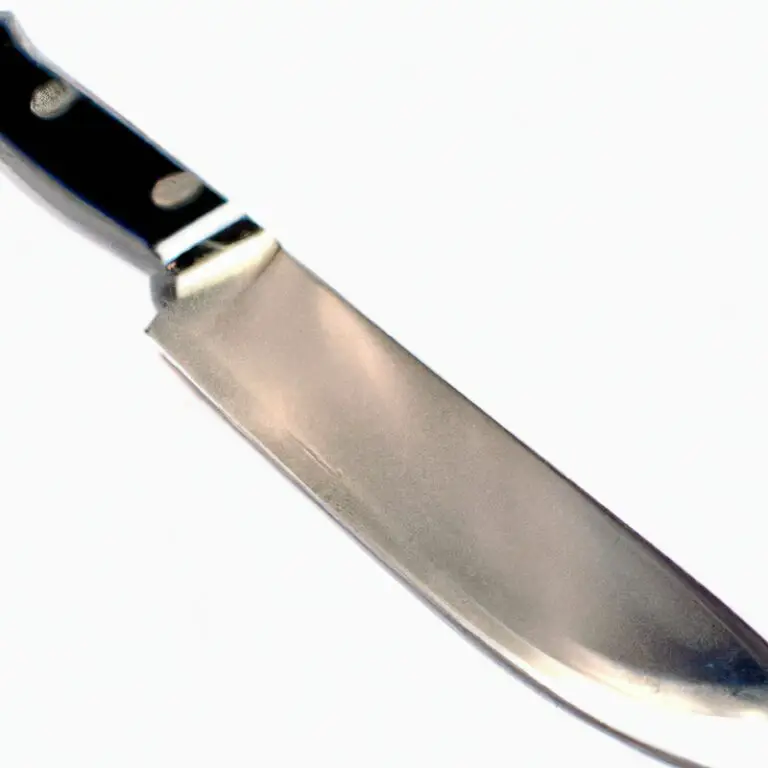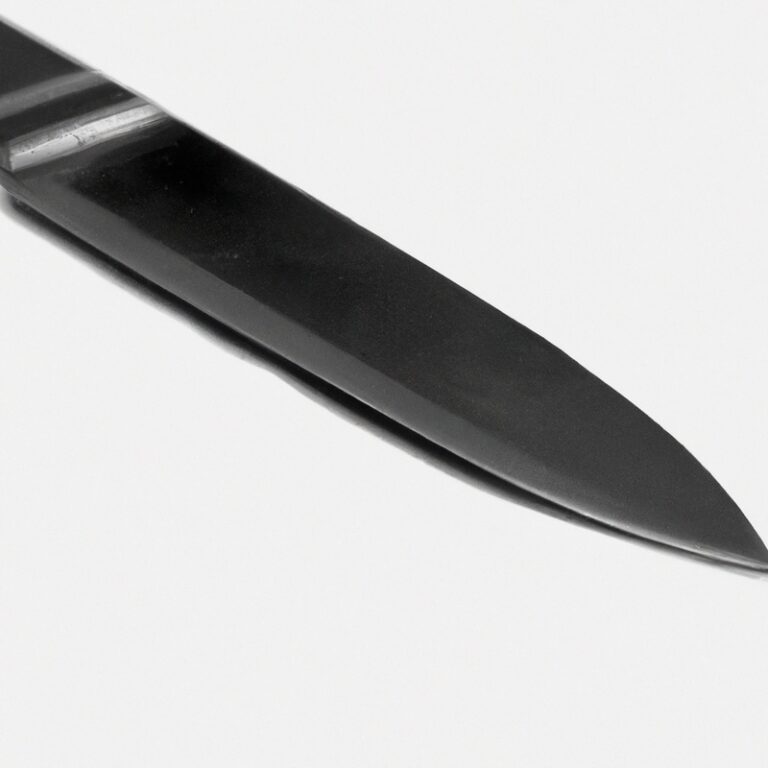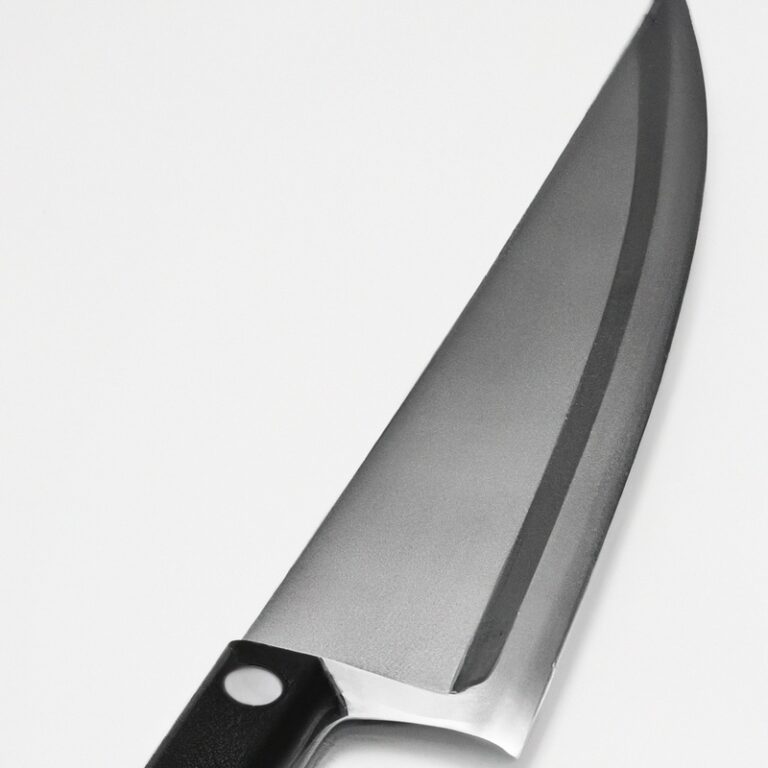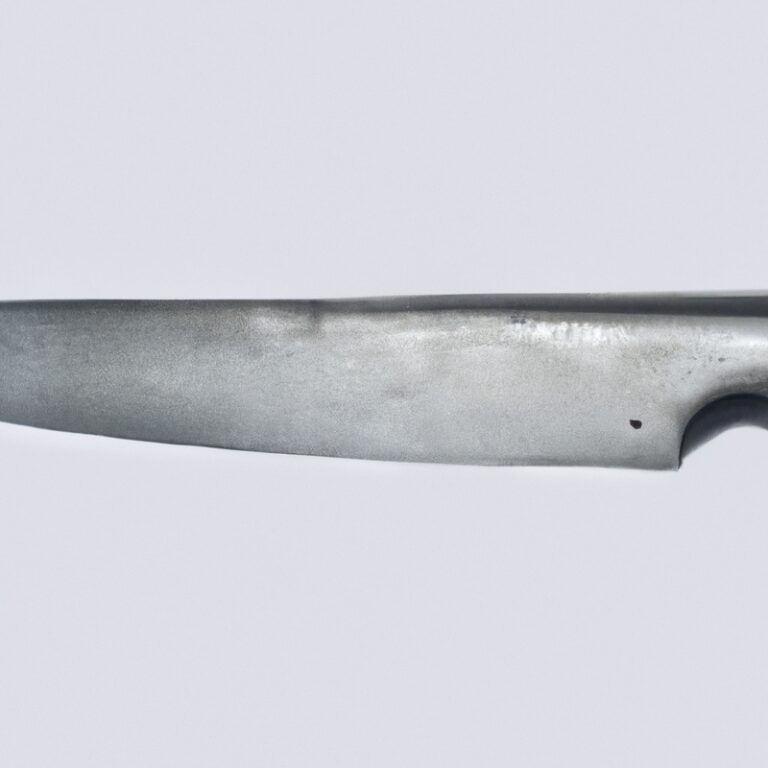What Are The Advantages Of Using a Serrated Knife For Cutting Through Crusty Pies Or Tarts?
Key Takeaways:
- Serrated knives have grooved edges that grip the crust, allowing for easier and cleaner cuts.
- The jagged teeth of a serrated knife can effectively slice through the hard exterior of crusty pies or tarts without squishing or crushing the filling.
- Serrated knives minimize the chances of tearing or crumbling the crust, maintaining the visual appeal and texture of your baked goods.
- With a serrated knife, you can achieve precise and controlled cuts, even when dealing with tough and crispy crusts.
Have you ever struggled to cut through a perfectly baked pie or tart without ruining the flaky crust or crushing the delicious filling inside? Trust me, I’ve been there too.
That’s why the right knife is essential for the job.
In this article, I’ll walk you through the advantages of using a serrated knife specifically designed for cutting crusty pies and tarts. From effortlessly slicing through tough crusts to achieving neat and clean slices, the unique characteristics of a serrated knife make it a game-changer in the kitchen.
Stick around to discover the secrets behind this fantastic tool, as well as tips for using it effectively.
Plus, I’ll even explore alternative knives that can do the job. Get ready to up your pie-cutting game and elevate your baking experience!
| Advantages of using a serrated knife for cutting through crusty pies or tarts: |
| 1. Precision: The serrated edge allows for more control and precise cutting, ensuring clean slices without crushing delicate crusts. |
| 2. Easy Cutting: The teeth on a serrated knife work like small saws, gripping the crust and making it easier to slice through without applying excessive pressure. |
| 3. Minimal Crumbs: Compared to a straight-edged knife, a serrated knife creates fewer crumbs, resulting in a neater presentation and less mess. |
| 4. Versatility: Serrated knives are not only suitable for cutting pies or tarts but can also be used for bread, pastries, cakes, and other crusty or delicate foods. |
| 5. Durability: Serrated knives tend to have a longer lifespan as the teeth can still cut effectively even when the blade loses its sharpness. |
Understanding the Importance of Using the Right Knife for Cutting Crusty Pies or Tarts
Why Cutting Crusty Pies or Tarts Requires a Special Knife
Cutting crusty pies or tarts requires a special knife because the crust can be tough and difficult to slice through with a regular knife. A special knife, like a serrated knife, has small teeth on the blade that help grip the crust and make cutting easier.
The teeth also prevent the crust from crumbling or breaking apart while cutting, maintaining the integrity of the pie or tart.
Using a special knife ensures clean and neat slices without crushing the filling, resulting in a more enjoyable eating experience.
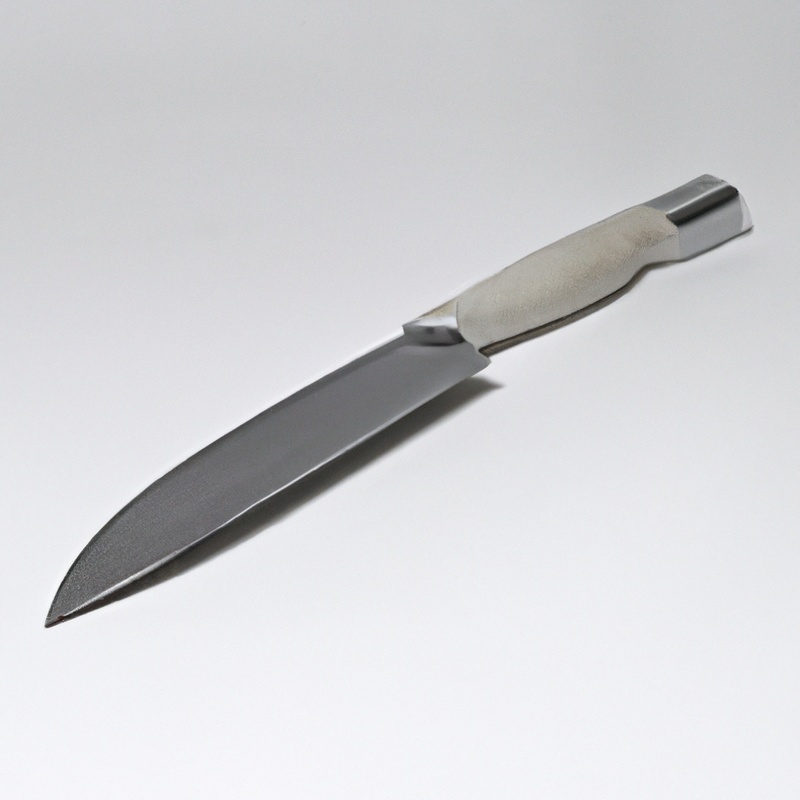
The Advantages of Using a Serrated Knife for Cutting Crusty Pies or Tarts
Using a serrated knife for cutting crusty pies or tarts has several advantages. Firstly, the serrated edge allows the knife to easily grip the tough crust without sliding off, making it easier and safer to cut.
Secondly, the pointed teeth on the blade help to create clean, neat slices, without squashing the filling.
Thirdly, the saw-like motion of a serrated knife prevents the pie or tart from breaking apart during cutting. Additionally, a serrated knife can also be used for cutting other baked goods or foods with hard exteriors.
Overall, a serrated knife is a versatile tool that ensures precise and effortless cutting of crusty pies or tarts.
The Unique Characteristics of a Serrated Knife
What Makes a Knife Serrated?
A serrated knife is unique because of its saw-like edge, featuring small, jagged teeth along its blade. These teeth create tiny points of contact with the food being cut, allowing for a more efficient and effective slicing motion.
The serrated edge helps grip and penetrate tough surfaces, such as the crispy crusts of pies or tarts, without crushing or tearing the delicate fillings.
This design also makes serrated knives ideal for slicing through foods with hard exteriors, like bread or tomatoes. The serrated edge enhances cutting performance and provides versatility in the kitchen.
How the Teeth on a Serrated Knife Help with Crusty Pies or Tarts
The teeth on a serrated knife are designed to grip and tear through tough and crusty surfaces, making them perfect for cutting crusty pies or tarts. Unlike a smooth-edged knife, the serrations provide traction, allowing you to apply less pressure while cutting.
This means you can effortlessly slice through the crispy crust without squashing the delicate filling underneath.
The sharp teeth also help prevent the pie or tart from crumbling or breaking apart during cutting, resulting in clean and neat slices. So, when it comes to tackling crusty baked goods, a serrated knife is your go-to tool.
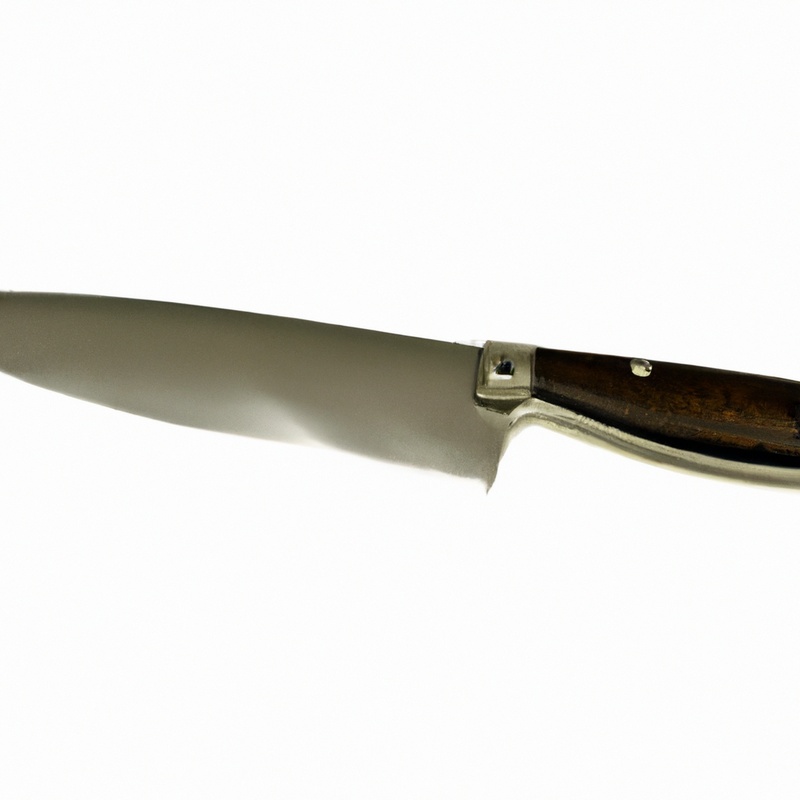
Advantages of Using a Serrated Knife for Cutting Crusty Pies or Tarts
The Ability to Slice Through Tough Crusts Without Crushing the Filling
A serrated knife’s ability to slice through tough crusts without crushing the filling is one of its greatest advantages. The sharp, saw-like teeth on the blade grip the crust, allowing for smooth and effortless cutting.
Unlike a straight-edged knife, the serrated edges prevent the crust from getting crushed or torn, ensuring that the filling remains intact and beautifully presented.
So, when it comes to cutting crusty pies or tarts, a serrated knife is definitely the way to go.
Achieving Clean and Neat Slices with Minimal Effort
Achieving clean and neat slices with minimal effort is one of the key advantages of using a serrated knife for cutting through crusty pies or tarts. The serrated edge of the knife allows it to grip the crust without tearing or crushing it, resulting in beautifully sliced portions.
Unlike a straight-edged knife, the serrated knife’s teeth work effectively to cut through the tough crust and glide smoothly through the delicate filling, ensuring precise cuts.
With a serrated knife in hand, you can effortlessly create picture-perfect slices of your favorite baked goods with ease.
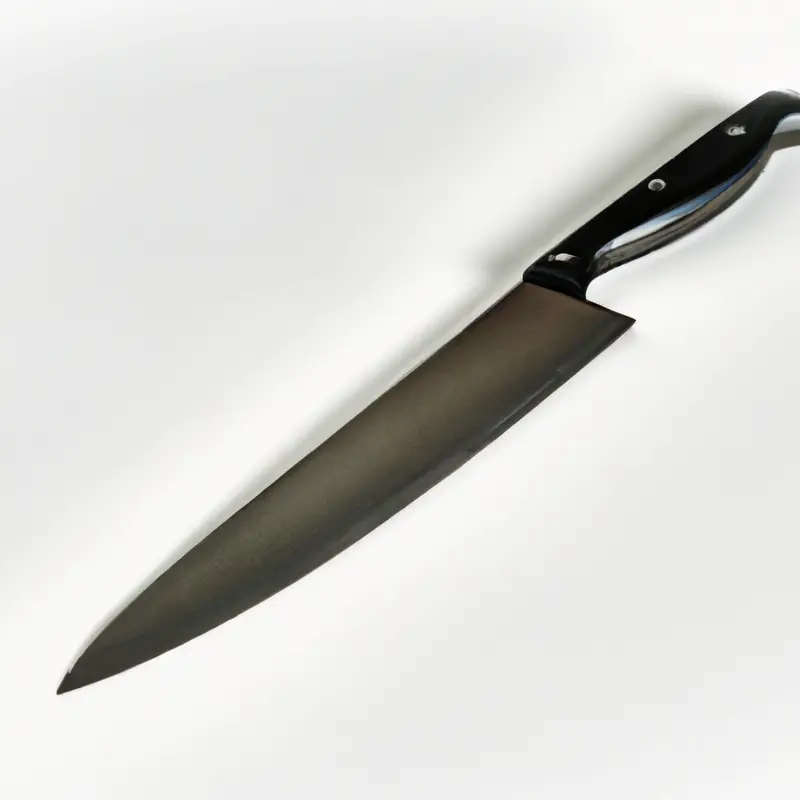
Preventing the Pie or Tart from Breaking Apart During Cutting
To prevent your pie or tart from breaking apart during cutting, there are a few simple tips you can follow. Firstly, make sure your pie or tart has cooled completely before cutting into it.
This will allow the filling to set and firm up, making it less likely to ooze out.
Secondly, use a serrated knife to cut through the crust. The serrated edges grip the crust, preventing it from crumbling or shattering.
Finally, use a gentle sawing motion rather than pressing down too hard.
This will help you achieve clean slices without causing the crust to break apart.
Versatility for Cutting Other Baked Goods or Foods
A serrated knife isn’t just handy for cutting crusty pies or tarts. It’s also surprisingly versatile for cutting other baked goods or foods.
The serrated edge allows for clean and precise cuts through items like bagels, bread, cakes, and tomatoes.
The teeth on the knife grip the surface, preventing slippage and ensuring a smooth slicing motion. So whether you’re slicing through a loaf of fresh bread or neatly cutting a delicate cake, a serrated knife is an excellent tool to have in your kitchen arsenal.
Tips for Using a Serrated Knife Effectively
Ensuring a Sharp Serrated Knife for Optimal Performance
To ensure optimal performance from your serrated knife, it is important to keep it sharp. Here are a few tips to help you maintain a sharp serrated knife:
- Use a sharpening tool designed specifically for serrated knives. These tools have tapered edges that fit into the serrations and can effectively sharpen each tooth.
- Avoid using a regular sharpening stone or honing rod, as they can damage the teeth of the serrated knife.
- Gently glide the sharpening tool along the edge of the serrated knife, following the curve of the teeth. Repeat this process on both sides of the knife.
- Test the sharpness of the knife by gently slicing through a piece of paper or a tomato. If the knife cuts smoothly without tearing, it is sharp and ready to use.
Remember to store your serrated knife separately from other knives to avoid unnecessary contact and damage to the teeth. By keeping your knife sharp, you can ensure that it performs optimally when cutting through crusty pies or tarts.
Proper Technique for Cutting Crusty Pies or Tarts
To properly cut through crusty pies or tarts, start by ensuring that your serrated knife is sharp. Begin at the edge of the crust and gently saw back and forth using a slow, steady motion.
Avoid pressing down too hard to prevent crushing the filling.
For clean and neat slices, continue the sawing motion until you reach the bottom of the pie or tart. It’s important to use a serrated knife because it has the right teeth and blade design to effortlessly slice through the tough crust without damaging the delicate filling.
Cleaning and Maintaining Your Serrated Knife
To keep your serrated knife in top shape, it’s important to clean and maintain it properly. Here are some tips:
- Hand-wash your knife: Avoid putting your serrated knife in the dishwasher. Instead, wash it by hand with warm, soapy water immediately after each use. This will help prevent food residues from building up and dulling the blade.
- Use a soft brush: To clean between the teeth of your serrated knife, use a soft brush, such as a toothbrush or a dish brush. Gently scrub the blade, making sure to remove any food particles stuck in the serrations.
- Dry it thoroughly: After cleaning, make sure to dry your serrated knife thoroughly with a clean towel to prevent any moisture from causing rust or corrosion.
- Store it properly: Store your serrated knife in a knife block or a knife sheath to protect the blade and prevent accidental cuts. Avoid storing it loosely in a drawer, as this can damage the blade.
Other Types of Knives That Can Be Used for Cutting Crusty Pies or Tarts
Straight-Edged Knives: Pros and Cons
Straight-edged knives have their own set of pros and cons when it comes to cutting crusty pies or tarts. One advantage is that they provide a precise and clean cut, which is ideal for thinner crusts.
However, they may struggle with tougher crusts, as they can crush the filling while exerting force to cut through.
Additionally, straight-edged knives require more effort and may not produce consistently neat slices like serrated knives. These factors should be considered when choosing the right knife for your pie or tart.
Pizza Wheels or Rollers: Pros and Cons
Pizza wheels or rollers are a popular choice for cutting through crusty pies or tarts, including pizzas. Here are a few pros and cons to consider: Pros:
- Quick and Easy: Pizza wheels allow for fast and efficient slicing, making it convenient for large gatherings or busy kitchens.
- Versatility: Apart from pizzas, pizza wheels can also be used for cutting other baked goods like bread or pastry.
- Clean Edges: The sharp wheel ensures clean and precise cuts, resulting in neat slices every time.
Cons:
- Limited Thickness: Pizza wheels may struggle with cutting through overly thick or dense crusts.
- Difficulty with Soft Fillings: If your pie or tart has a soft or runny filling, a pizza wheel may cause the filling to spill or smear.
- Storage and Cleaning: Pizza wheels can be somewhat challenging to clean, especially when cheese or sticky dough gets stuck in the wheel’s crevices.
Ultimately, the choice between a serrated knife and a pizza wheel depends on personal preference and the specific characteristics of the pie or tart being cut.
Electric Knives: Pros and Cons
Electric knives can be a convenient tool for cutting through crusty pies or tarts, but they come with their own set of pros and cons. Pros:
- Efficiency: Electric knives are designed to cut through tough crusts effortlessly, saving you time and effort.
- Precision: The electric blade provides consistent slices, ensuring even portions for your dessert.
- Versatility: Electric knives can also be used for slicing other foods like bread or meat, making it a versatile kitchen tool.
Cons:
- Cost: Electric knives can be more expensive compared to traditional knives.
- Maintenance: Electric knives require more care and maintenance, as the blades may need to be sharpened or replaced regularly.
- Limited control: Some users find it difficult to have the same level of control that they have with a traditional knife.
Ultimately, the decision to use an electric knife for cutting crusty pies or tarts depends on personal preference and the frequency of use.
Final Verdict
Using a serrated knife for cutting through crusty pies or tarts offers several distinct advantages. The serrated teeth on the blade allow for precise and effortless slicing, minimizing the risk of damaging the delicate filling.
The ability to slice through tough crusts without crushing the filling ensures clean and neat slices every time.
Moreover, the versatility of a serrated knife allows it to be used for cutting other baked goods or foods. To ensure optimal performance, it is important to keep the knife sharp and practice proper cutting techniques.
While other types of knives can be used for this task, the unique characteristics of a serrated knife make it the preferred choice for achieving perfect slices of crusty pies or tarts.
Trust me, with a serrated knife in hand, you’ll never struggle with cutting through crusty pastries again.

